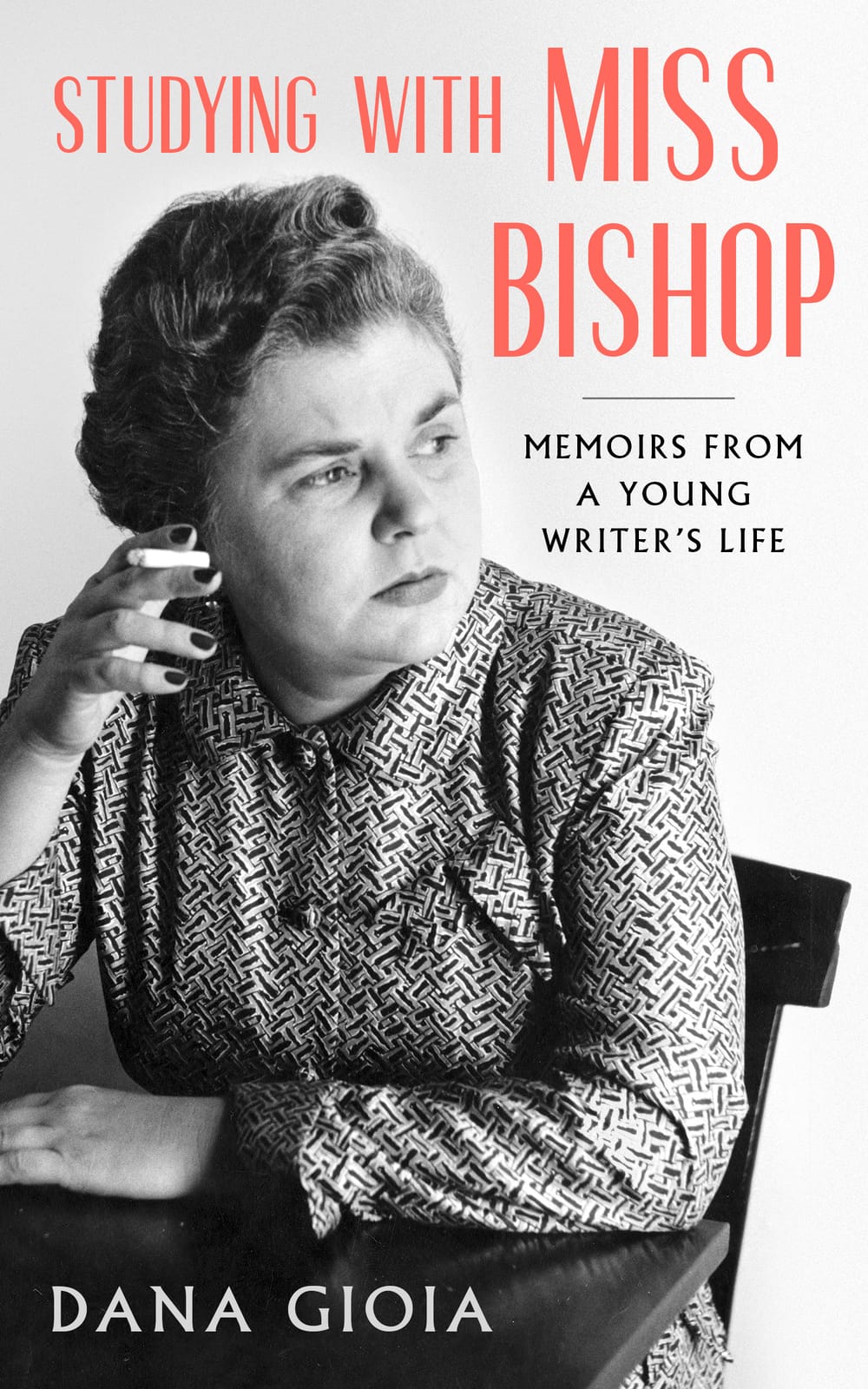Stay in the Loop
BSR publishes on a weekly schedule, with an email newsletter every Wednesday and Thursday morning. There’s no paywall, and subscribing is always free.
The private lives of readers and writers
Studying with Miss Bishop: Memoirs from a Young Writer’s Life, by Dana Gioia

According to Dana Gioia, every reader has “two lives—one public, the other secret.” Several times during his distinguished career, Gioia himself has led secret lives, set out in the graceful, grateful memoir Studying with Miss Bishop.
In the preface to this appealing work, Gioia cites a John Cheever story that “took place in a time when people still wore hats.” Hats were more or less on the way out when Gioia was born in 1950, but he grew up in a similar time warp—a computer-less era when “people still wrote letters and read newspapers [and] every neighborhood had a bookstore [and] the printed word had power.” His career blossomed in an arc virtually impossible today.
Gioia is an award-winning, widely accomplished writer who has crafted five highly regarded poetry collections and 15 literary anthologies, as well as criticism, translations, and opera libretti. He has been California’s poet laureate, chair of the National Endowment for the Arts, and a distinguished professor at the University of Southern California.
The first bookworm
In Studying with Miss Bishop, Gioia explores six people who influenced his career, four famous and two not. In “Lonely Impulse of Delight,” his first chapter, Gioia goes back to his Los Angeles childhood. He grew up in a large Sicilian enclave with parents who worked full-time (often two jobs). No one in his family or environs read much, though oddly, the apartment was teeming with books like the novels of Thomas Mann and Bernard Shaw’s plays, which the author took from the shelf “looking vainly for something a kid might enjoy.”
But on those shelves Gioia did find lots to entice him. He devoured the adult biographies there. Reading the Victor Book of Opera, he presciently constructed opera plots and grew up looking at the visuals of Botticelli, Velazquez, and El Greco “before I ever saw the drawings of Dr. Seuss.”
Gioia’s family “never before encountered a bookworm” and had no idea what to do with him. But he was never discouraged or disparaged; accommodating his reading habit, “these stoical Sicilians hoped for the best.” The books at home were the legacy of seafaring uncle Ted Ortiz, a self-educated man who lived with the family between voyages and created the library that Gioia plundered daily. Ortiz died young, and Gioia doesn’t really remember him, “but I think I know him pretty well. After all, he helped raise me.”
Enter Miss Bishop
In the titular chapter, Gioia is in graduate school at Harvard (clearly prepared for the Ivies by all that reading), where he chose the road less taken by enrolling in Elizabeth Bishop’s under-the-radar class (“English 285: Studies in American Poetry”) instead of the popular Robert Lowell seminar frequented by the literary strivers.
“Studies” was taught in a grimy building with mismatched chairs around a table, “at one end of which—prim, impeccably coiffured and smoking—sat Miss Elizabeth Bishop.” The first published writer Gioia met, she was “disappointingly normal [but] disorganized.” Bishop came to Harvard late in her career, confiding “I’m not a very good teacher.” Students agreed, and after the first class, her dozen registered participants dwindled to five.
Though comfortably ensconced in America’s poetic pantheon, Bishop disliked formal literary criticism and taught by meandering through poems, a method under-appreciated by high-powered Harvard students. But Gioia thrived there, and she helped set him on his poetic path. Expertly constructed, the chapter is a fond but revealing portrait that reads like a short story.
Incisive yet affectionate
Gioia’s memoir doesn’t proceed in a chronology. In each lively chapter, the author scopes his career through the lens of others. He profiles the elegant classicist Robert Fitzgerald (whose teaching of poetic prosody and formalism directly shaped his work); novelist John Cheever (“I remember his modesty as a writer”); exuberant, outspoken James Dickey (who wrote poetry as well as Deliverance); and Ronald Perry (an out-of-the-mainstream poet with whom the author only corresponded). Each is a delightful read, incisive yet affectionate.
In 1975, Gioia left Harvard’s doctoral program to acquire a graduate degree from Stanford Business School, and—parallel to his life as a writer and wordsmith—he was for 15 years a rising corporate executive at General Foods “resolved to keep my double life hidden from my coworkers.” In a short postscript, Gioia notes that he was successful in this for a decade, buying up all the copies of The New Yorker from the company shop every time something of his was published.
Studying with Miss Bishop is framed as literary portraiture, but it’s also a winning study of the artist himself. (You can hear him read an excerpt of this work online.) Though on an early track for a successful academic career, Gioia ultimately left Harvard because he “didn’t want to write in ways that excluded people, especially the people I came from.” This writer wanted his words and work to be accessible to everyone, and in this nuanced memoir (as in his admirable poems and a lifetime of first-rate prose), he has most definitely succeeded.
What, When, Where
Studying with Miss Bishop: Memoirs from a Young Writer’s Life. By Dana Gioia. Philadelphia: Paul Dry Books, 2021. 182 pages, paperback; $19.95. Get it at pauldrybooks.com.
Sign up for our newsletter
All of the week's new articles, all in one place. Sign up for the free weekly BSR newsletters, and don't miss a conversation.

 Gail Obenreder
Gail Obenreder